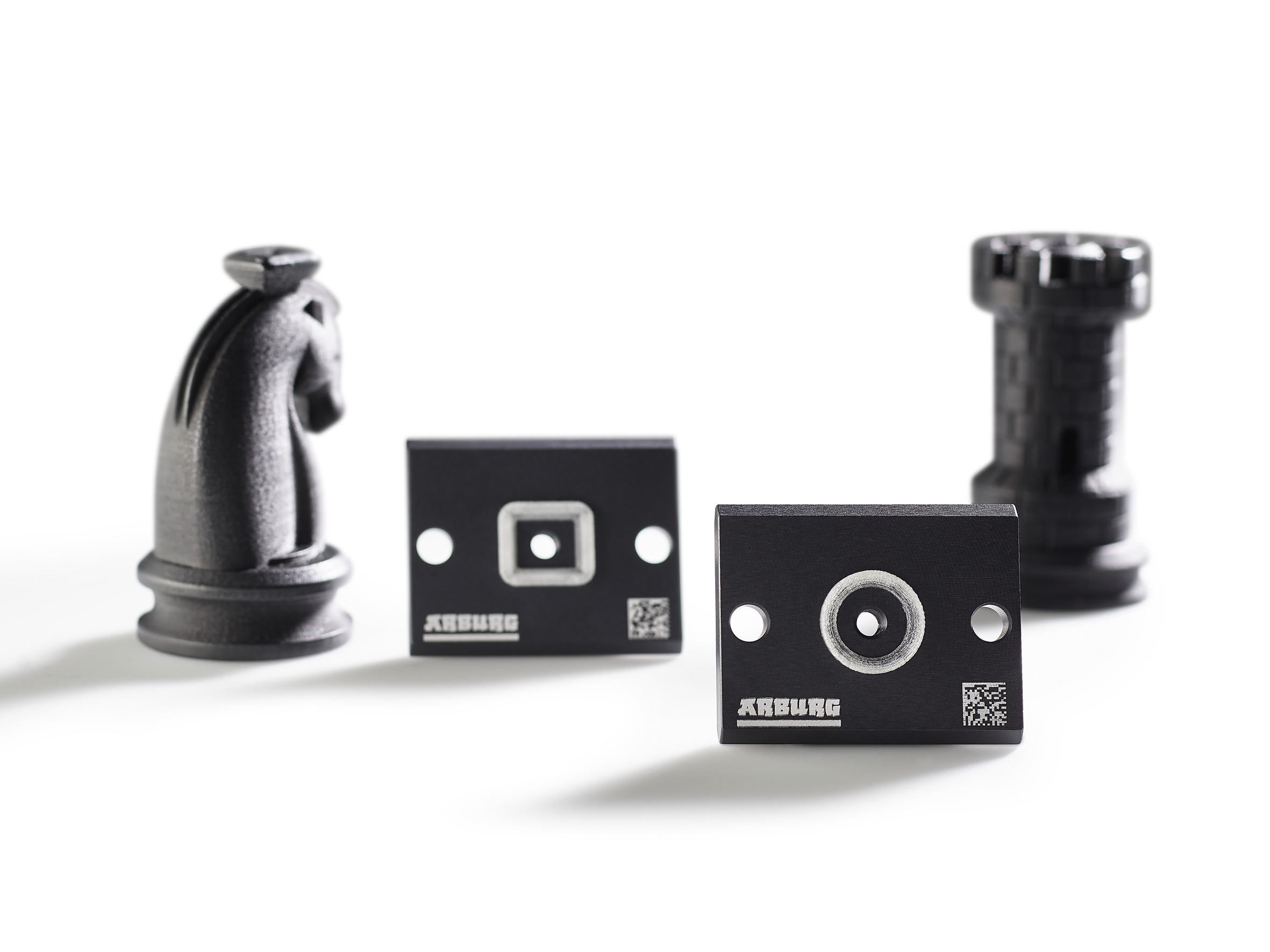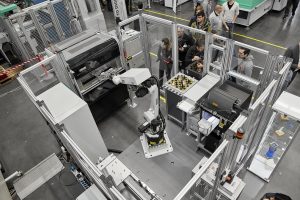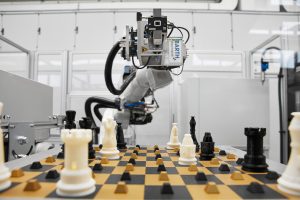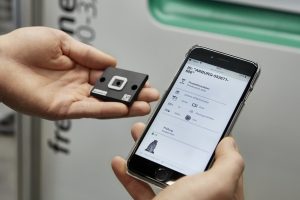Arburg is one of the leading global manufacturers of plastic processing machines. The product portfolio includes Allrounder injection moulding machines and the Freeformer for industrial additive manufacturing. In addition, the company possesses many years of experience in the areas of digitalisation and turnkey solutions. One of the Arburg highlights at the Hannover Messe 2019 will be the “AM Factory”: An IT-networked turnkey system, built around a Freeformer 300-3X and a six-axis robot, functionalises variants of standard gripper plates – in a process that is fully automated according to customer requirements, and 100 percent traceable.
“Our ‘AM Factory’ demonstrates how an automated and IT-networked Freeformer can individualise high-volume products,” explains Heinz Gaub, Managing Director Technology & Engineering at Arburg. “In our practical example, a Freeformer enhances vacuum gripper base plates made of aluminium ‘on demand’, adding functional contours made of soft plastic. All handling, including functional testing of the newly created gripper, is performed by a six-axis robot. With our ATCM SCADA system, the manufacturing process of each gripper is 100 percent traceable.”
“AM Factory”: Fully automated additive manufacturing
Arburg’s method for the functional individualisation of serial parts – which relies on a fully automatic and traceable industrial additive manufacturing process designed to create added value – is unique in the world of additive manufacturing (AM). The method also includes the integration of further process steps. As an example, the turnkey system produces individual gripper plates for chess pieces.
At the terminal, the visitors specifies which chess piece of the chess game set up in the production cell is to be moved. The Freeformer applies the functional TPE contour to the gripper plate to match the chosen chess piece: for a queen, king, bishop, knight, rook or pawn, it is important to complete the correct gripper geometry so that the piece can be “gripped” and moved by vacuum. The six-axis robot removes the aluminium base plate from the shaft magazine and passes it to the “laser engraving” station, where it is marked with a DM code, thus making it uniquely traceable.
The insert is placed on a workpiece carrier. The robot then changes its gripper to pick up the workpiece carrier and pass it to the next station. Here, the base plate is plasma-treated and scanned before it is inserted into the build chamber, transferring the 3D print job to the Freeformer 300-3X. The six-axis robot and the Freeformer communicate via a Euromap 67 interface for opening and closing the door of the build chamber when loading and unloading the parts. The Freeformer completes the desired functional contour according to the stored order in around three to four minutes, using the elastic plastic TPU (Desmopan 9370). The workpiece carrier is then removed and the component is rescanned, telling the robot which chess piece it should use to functionally check the gripper plate.
Functional check inline
The robot deposits the workpiece carrier and switches back to the gripper for handling the base plate. In doing so, it forwards the individualised part to a tactile function test while it is still in the production cell. For this purpose, the desired game piece is picked up via vacuum and moved on the chess board. This is only possible if the additively applied contour matches the piece exactly. The chess pieces themselves were previously additively manufactured from ABS on a Freeformer 200-3X.
ATCM SCADA system records process and quality data
The Arburg Turnkey Control Module (ATCM) SCADA system is available for new Arburg turnkey systems and has a system-specific interface. A prerequisite for implementation and data transfer is an OPC UA interface. In the ATCM, each part automatically receives a unique number (ID). The main task of the SCADA system is to record and merge part-specific process parameters and test results. The individual data sets are transmitted to an evaluating system, such as the Arburg ALS host computer system, via the OPC UA communication protocol at defined intervals. This means that every part can be fully documented, from the injection moulding process or additive manufacturing to quality assurance and removal from the production cell.
Every part 100 percent traceable
Each gripper plate is 100 percent traceable via its DM code. After scanning the code, production data such as build time, material, pressure profile and build chamber temperature are displayed on an individual website. In addition, the “AM Factory” uses a modular and scalable safety controller that Arburg has developed especially for complex turnkey systems in order to meet ever-more stringent safety standards.
Photos
ARBURG 166172 AM Factory overview.jpg
In the “AM Factory”, an IT-networked, automated turnkey system built around a Freeformer 300-3X functionalises variants of series gripper plates – in a process that is fully automated according to customer requirements and 100 percent traceable.
ARBURG_166226 AM Factory 2019 chess.jpg
Thanks to the individualised gripper plate, the six-axis robot is able to move the selected pieces on the chessboard.
ARBURG_166222 AM Factory 2019 traceability.jpg
With the DM code, all data can be accessed on the part-specific website. In the “AM Factory”, the part-specific process parameters and test results are recorded and merged by the ATCM SCADA System.
Subscribe to our Newsletter
3DPResso is a weekly newsletter that links to the most exciting global stories from the 3D printing and additive manufacturing industry.



























